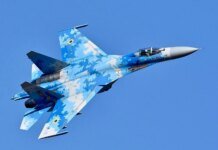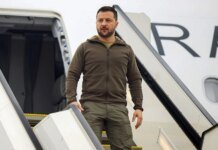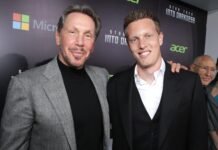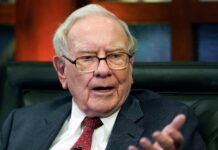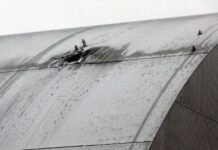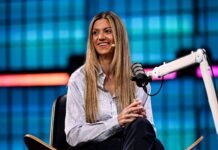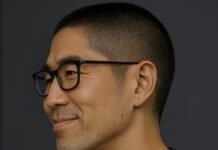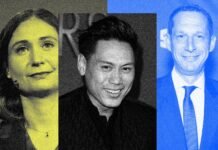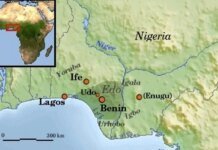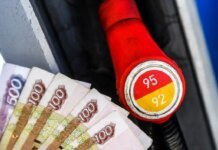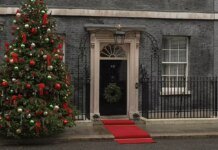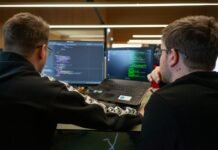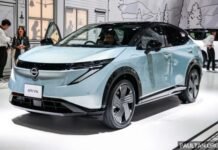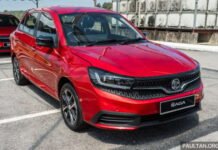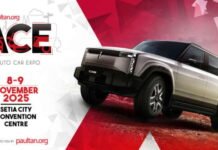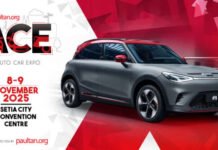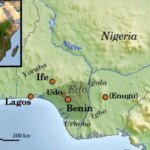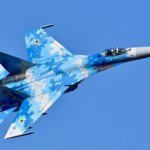CFOTO/Future Publishing via Getty Images
Elon Musk talked up future products and railed against critics of his proposed $1 trillion pay package in a call with analysts following Tesla's third-quarter earnings.
Tesla posted record quarterly revenue but its profit came in below Wall Street's expectations. The stock was down about 1.6% after hours following the results and dipped further still during an analyst call.
Tesla reported adjusted earnings per share of $0.50, trailing the consensus analyst estimate of $0.54. It did, however, report revenue of $28.1 billion, an all-time high that exceeded forecasts after it delivered a record number of vehicles in the quarter.
Musk hyped up the next generation of its Optimus humanoid robot multiple times during the call, a product he said was "challenging" to manufacture but held huge upside. He teased a reveal of Optimus V3 expected in "February or March."
The Tesla CEO said the EV maker was working to expand vehicle production "as fast as we can," and that he expects Robotaxis operating in "eight to ten metro locations" by the end of the year, including in Nevada, Florida, and Arizona.
Tesla said in its earnings release that it faces "near-term uncertainty from shifting trade, tariff and fiscal policy." The EV giant said in the report that its operating income decreased 40% year over year, due to various factors, including higher average cost per vehicle, partially due to an increase in tariffs.
Musk also had some harsh words for two major proxy firms critical of his proposed Tesla pay package, ISS and Glass Lewis, whom he described as "corporate terrorists." Shareholders will vote on the compensation package on November 6.
Catch up on the full play-by-play from the analyst call below:
Musk calls ISS and Glass Lewis "corporate terrorists" as he urges shareholders to approve his $1 trillion pay package.
Tesla's CFO closes off the call by urging shareholders to vote for Musk's $1 trillion pay package. Musk chimes in to talk about the importance of having more voting control, saying it's not really possible for him to get "supervoting" stock grants like some other tech founders have, since Tesla is already a publicly traded company.
Musk says he doesn't feel comfortable building a robotics arm at Tesla and then "being ousted" because of a hypothetical recommendation from major proxy firms like ISS and Glass Lewis, whom the Tesla CEO called "corporate terrorists." (Both firms have recommended shareholders vote against some or all of his proposed $1 trillion pay package.)
"They have made many terrible recommendations in the past, that if those recommendations had been followed, would have been extremely destructive to the future of the company," Musk says.
Musk says Tesla will "show off" the next Optimus prototype in February or March.
Musk narrows his estimate a bit, saying Tesla will have a "prototype ready to show off in Q1, probably February or March."
He says Tesla plans to build a million unit Optimus production lines, hopefully stating at the end of next year. He says the company will make "rolling changes" with Optimus and there will be "continued iteration" on the hardware design, because the team will discover things along the way.
Musk explains the difference between xAI and Tesla's AI efforts.
Musk says xAI's Grok and Tesla AI are on "opposite ends of the spectrum." Musk says Grok is "trying to solve for artificial general intelligence with a massive amount of AI training compute and inference compute."
He says Tesla AI models are about less than 10% — or closer to 5% — the size of Grok's. "You could not possibly squeeze Grok onto a car, that's for sure," Musk says, adding that Grok competes with OpenAI's GPT and Google's Gemini frontier models.
Musk says Tesla added "a lot of new engineers," many of whom are recent grads.
Musk says the Optimus engineering team is "very talented," and credits a lot of the recent engineering progress for the robot to those engineers.
He says Friday night Optimus meetings sometimes go until midnight, and the segment is "crucial" to Tesla's future.
Musk says you can think of Tesla as "a dozen startups in one company."
The CEO names various parts of the business, including the battery packs, supercharger network, chip design team, and the AI software team.
He says Optimus at scale is the "infinite money glitch." Musk describes a world in which working will be optional and Optimus will achieve 5x the productivity of a person per year, because it can operate around the clock and doesn't need to charge.
Next up, the live Q&A with analysts…
Musk and the other Tesla execs are now fielding questions from Wall Street analysts.
Musk says AI will make cars feel like a "living creature."
Musk teases a number of AI improvements for Tesla vehicles that he says are "quite radical."
"It might almost be too much intelligence. I do wonder, like, how much intelligence should you have in a car? It might get bored," Musk says.
Musk says vehicle production could expand at an "annualized rate of 3 million within 24 months"
Musk says it could happen in less than 24 months if the supply chain can keep up with that pace.
"So I think we're going to expand production as fast as we can, as fast as our supplies can sort of keep up with it," Musk says. He says the "single biggest expansion in production will be the Cybercab," which is set to begin production in the second quarter next year.
Musk says both TSMC and Samsung will be focused on Tesla's AI5 self-driving chip.
Over the summer, Tesla struck a $16.5 billion deal with Samsung for the company to produce some of Tesla's new chips from the manufacturing plant it is building in Taylor, Texas. The plant is expected to open in 2026.
Musk sought to clarify the arrangement on the call, saying both TSMC and Samsung would be building Tesla's A15 self-driving computer chip.
"Our goal, explicit goal, is to have an oversupply of AI5 chips," Musk says.
He adds that Tesla is "not about to replace Nvidia," but if Tesla has too many AI chips for the cars and robots, it can always use them for its data center. Musk says Nvidia has multiple clients to provide chips to, but Tesla only has to serve itself.
Musk says bringing Optimus to market is "incredibly difficult," as is robo-hand design.
Musk says creating a humanoid robotic hand as capable as a human's is a "difficult engineering challenge."
He says manufacturing is also a key challenge because the supply chain for humanoid robots doesn't exist.
"We do have Optimus robots that walk around our offices at our engineering headquarters in Palo Alto, California, basically 24 hours a day, seven days a week," Musk says. He says any visitor can come by and ask the Optimus robot to take them somewhere and it will bring them to meeting rooms or other building locations.
Wall Street doesn't appear to like what it's hearing — Tesla stock is down 4.5% after hours.
Yahoo Finance
Tesla expects to operate robotoaxis in Nevada, Florida, and Arizona by the end of 2025.
The company says that the timeline depends on "various regulatory approvals."
Tesla says it continues to operate its fleet in Austin, covering more than a quarter million miles without anyone in the driver's seat.
Tesla CFO addresses continued impact from tariffs.
Tesla's CFO says tariffs had an impact on Tesla's energy storage business, despite the segment delivering record gross profit and margins.
"The other thing to keep in mind is we are seeing headwinds in this business, given the increase in competition and tariffs, the total tariff impacts for Q3 for both businesses was in excess of $400 million, generally split evenly between them, services and other demonstrated a marked improvement sequentially," the CFO says.
He adds that the ramp of Tesla's Shanghai megafactory is helping it avoid some impact, because the factory can supply non-US demand.
Next up, Tesla's CFO reads his prepared remarks.
CFO Vaibhav Taneja is going through Tesla's financial results and providing additional context.
Musk teases possible Optimus V3 unveiling in Q1.
Musk says Tesla is "on the cusp of something really tremendous" with Optimus. Musk says Tesla is excited to unveil Optimus V3, "probably in Q1."
"It won't even seem like a robot, it will seem like a person in a robot suit," he says. (You might remember that the company first unveiled its humanoid robot ambitions with humans in robot suits.)
Musk says Tesla has "the ingredients of real-world AI and exceptional electrical, mechanical engineering capabilities" and the ability to scale Optimus production.
Musk: "We're at a critical inflection point for Tesla"
Musk opens the call by talking up Tesla's efforts toward fully autonomous driving.
The CEO says FSD and robotaxis will change the transportation sector, and there are billions of Tesla cars that are capable of becoming fully self-driving vehicles with a software update. Musk says he plans to expand production as fast as Tesla "reasonably can."
And we're off! Tesla's analyst call has begun.
After a short delay, Tesla CEO Elon Musk is on the call along with CFO Vaibhav Taneja.
The executives begin with prepared remarks about the third quarter results before answering a sampling of previously submitted retail investor questions and live questions from analysts.
With around 10 minutes until Tesla's analyst call kicks off, the stock is down ~1.6% after hours
Yahoo Finance
The stock has inched up a bit since dipping around 2% after the results crossed but is still in the red after hours.
Tesla retail investors have questions about FSD, Optimus, the Robotaxi, and Cybertruck.
Tesla retail investors submitted just over 2,000 questions on Tesla's online Q&A forum ahead of the investor call, with queries about FSD taking the lead. Tesla typically answers some of them on the call.
Here are the most upvoted questions:
- "What are the latest Robotaxi metrics (fleet size, cumulative miles, rides completed, intervention rates), and when will safety drivers be removed? What are the obstacles still preventing unsupervised FSD from being deployed to customer vehicles?" says the top post, with 3.6k upvotes.
- "What are the plans for new car models? Will Tesla build compact car models leveraging the unboxed Cybercab platform? Will Tesla build a traditional SUV and pickup truck in the Cybertruck platform?" the second-most upvoted question says.
- "What are the present challenges in bringing Optimus to market considering app control software, engineering hardware, training general mobility models, training task specific models, training voice models, implementing manufacturing, and establishing supply chains?" a question with 2.2k upvotes says.
Analysts remain optimistic about Tesla's 2026
Thomas Monteiro, senior analyst at Investing.com, said in a note that Tesla's revenue beat "should carry more weight with investors than the EPS miss."
"Given the overall challenging environment for EVs and discretionary spending seen in other reports, this is a particularly positive sign," Monteiro said.
"Now that the legacy EV business has likely bottomed, future timelines are more important for investors than today's numbers as that will drive growth," said Andrew Rocco, Stock Strategist at Zacks Investment Research.
Tesla bull Dan Ives echoed the same sentiment. Shortly after the earnings release, he wrote in a post on X that "Tesla is now entering its most important chapter of growth with the autonomous era kicking off."
Sorry, Tesla Roadster reservation holders — the supercar is still in "design development."
The new Roadster is listed as "Design Development" — the same status as recent quarters. The electric supercar, a follow-up to Tesla's first-ever vehicle, was first unveiled by Elon Musk nearly 8 years ago at a November 2017 event.
Musk in 2024 thanked the "long-suffering deposit holders," saying that the Roadster hadn't come out yet because "it's the cherry on the icing on the cake" — and there are "other projects taking precedence before its launch."
Roadster reservation holders forked over $50,000 to preorder the vehicle. Popular YouTuber MKBHD recently canceled one of his two reservations for the vehicle.
Tesla's cash and volume outlook
Here's what Tesla said in its earnings release:
Volume: It is difficult to measure the impacts of shifting global trade and fiscal policies on the automotive and energy supply chains, our cost structure and demand for durable goods and related services. While we are making prudent investments that will set up our vehicle, energy and other future businesses for growth, the actual results will depend on a variety of factors, including the broader macroeconomic environment, the rate of acceleration of our autonomy efforts and production ramp at our factories.
Cash: We have sufficient liquidity to fund our product roadmap, long-term capacity expansion plans and other expenses. Furthermore, we will manage the business such that we maintain a strong balance sheet during periods of uncertainty. Profit While we continue to execute on innovations to reduce the cost of manufacturing and operations, over time, we expect our hardwarerelated profits to be accompanied by an acceleration of AI, software and fleet-based profits.
Tesla provides updates on key product timelines, including its Optimus humanoid bot
Tesla says the Cybercab, Tesla Semi, and Megapack 3 are scheduled for volume production starting next year. It also said that first-generation production lines for its Optimus humanoid robot "are being installed in anticipation of volume production."
In August, Business Insider reported that Tesla shifted to a vision-only approach for the Optimus program, focusing on recording videos of workers to teach the robot how to do basic tasks, like folding clothes. Previously, Tesla used motion capture suits and virtual reality headsets to record data and operate the robot remotely.
Tesla continues to face 'near-term uncertainty' from tariffs and trade policies
Tesla says in its earnings release that it faces "near-term uncertainty from shifting trade, tariff and fiscal policy."
The EV giant said in the report that its operating income decreased 40% year over year, due to various factors, including higher average cost per vehicle, partially due to an increase in tariffs.
In its last earnings report, Tesla similarly stated that it was experiencing a "sustained uncertain macroeconomic environment resulting from shifting tariffs, unclear impacts from changes to fiscal policy and political sentiment."
THE NUMBERS: Tesla beats Wall Street's estimates for revenue, misses on EPS
THIRD QUARTER RESULTS
- Adjusted EPS 50c vs. 72c y/y vs. estimate 54c (Bloomberg
Consensus - EPS 39c vs. 62c y/y
- Revenue $28.10 billion, +12% y/y vs. estimate $26.36 billion
- Gross margin 18% vs. 19.8% y/y vs. estimate 17.2%
- Operating income $1.62 billion, -40% y/y vs. estimate $1.65
billion - Free cash flow $3.99 billion, +46% y/y vs. estimate $1.25 billion
Source: Bloomberg
The Cybertruck's waning popularity
Raven Seeholzer/Teslab
It's worth keeping an eye out for any commentary about the Cybertruck, the distinctive vehicle that has struggled to sell as well as expected.
Tesla sold 5,400 of them in the second quarter — down 62% from the same period last year, according to data from Cox Automotive.
Back in 2023, Musk said Tesla could expand production to 250,000 a year. But just 16,000 Cybertrucks have been sold so far this year.
Investors will want a progress report on the robotaxi launch
Tesla began a limited rollout of its highly anticipated robotaxi service in Austin in June, with safety drivers present in the passengers' seat, and investors will want a status check on the rollout's progress and possible expansion.
Musk previously shared plans for the robotaxi service to be in many cities by the end of 2025, and also predicted there would be "millions of Teslas operating fully autonomously in the second half of next year."
Investors will also want an update on when owners will be able to add their vehicles to the Tesla robotaxi fleet. In Tesla's last earnings call, Musk said owners would be able to do so "next year."
Some say the more affordable models don't do enough to fend off Chinese competition
Stanislav Kogiku/SOPA Images/LightRocket via Getty Images
Coming without features like Autosteer and rear screens, the high price tags of the more affordable models underwhelmed some commentators.
Andy Palmer, a former Nissan executive often called the "godfather of EVs" told Business Insider the models don't do enough to fend off competition from China's EV giants. BYD, whose cheapest model starts at less than $10,000 in China, sold more EVs than Tesla in Europe for the first time in April.
"If you take out the features — and Tesla has taken out an awful lot of features — then that creates a new price point, but that new price point doesn't make it competitive with the Chinese
Tesla's new "more affordable" models will likely be a hot topic
Earlier this month, Tesla revealed its long-awaited lower-cost Model Y and also surprised the world by announcing a more affordable version of its Model 3. Both are referred to as the "standard" version of the models and drop a number of features offered in the higher-end models, including the radio and Autosteer.
The Standard version of Tesla's most popular Model Y will cost $39,990, and the Model 3 Standard costs $36,990.
While customers and investors eagerly awaited the more affordable model's release, Wall Street analysts largely expressed disappointment at the vehicles' price points.
"We are relatively disappointed with this launch as the price point is only $5k lower than prior Model 3's and Y's," Tesla bull Dan Ives wrote in a note to investors after the announcement.
Analysts and investors will be looking for an update on Semi and Cybercab production
Tayfun Coskun/Anadolu via Getty Images
Tesla said in its second-quarter earnings release that the Semi and Cybercab production were both expected to reach volume production in 2026. With just a few months left of 2025, investors will want to know if the EV giant is still headed toward that timeline.
Tesla recalls over 12,900 vehicles
Tesla recalled nearly 13,000 vehicles built this year, due to a defect that regulators said can cause a sudden loss of battery power and increase the risk of a crash. The issue involves 2025 Model 3s and 2026 Model Ys, according to a National Highway Traffic Safety Administration filing on Tuesday.
While many past Tesla recalls were remedied through over-the-air software updates, impacted owners this time around will have to take their vehicle in to replace the part in question, the battery part contactor. The part replacement will be free of charge.
Tesla's Field Reliability team began investigating identified incidents in August, and as of October 7, it had identified 36 warranty claims and 26 field reports related to the condition, the recall report said. There were no collisions, injuries, or deaths related to the issue.
Cantor says focus will be on near-term catalysts for the stock
CFOTO/Future Publishing via Getty Images
Andres Sheppard of Cantor Fitzgerald wrote this week that the focus will be on the biggest catalysts for the stock price. Specifically, he cited "several upcoming key material potential near-term catalysts, including: continued rollout of Robotaxi in Texas and California, ramp up of the Model 3/Y standard (lower-cost vehicle), FSD adoption in China and Europe, launch of the cybercab in 2026, and an update on the timeline for its humanoid Optimus Bot."
Cantor has a $355 price target for the stock, implying downside of about 20% from current levels.
Goldman says watch for 5 big items from tonight's earnings call
Analysts at Goldman Sachs wrote earlier this month that they're eyeing a handful of key updates from the carmaker.
- The outlook for vehicle deliveries
- Automotive profit margins
- Progress on robotaxis and full self-driving
- Growth in its energy business
- Fresh updates on the Optimus robot
The bank has a price target of $425 a share and a "Neutral" rating on the stock. The analysts said they expect Tesla to deliver 475,000 vehicles this quarter, down slightly from nearly 500,000 delivered in Q3
RBC sets a $500 price target for Tesla stock on "sum-of-the-parts" methodology
Anna Moneymaker/Getty Images
Analysts at RBC have a price target of $500 for Tesla stock, representing 12% upside from Wednesday's price. Their thesis hinges on a "sum-of-the-parts" methodology that values the company on revenues related to all of its business units, with its auto unit ranked lower than things like AI and robots.
The bank's Tom Narayan upped his Tesla price target after speaking with the company's management team about production of its humanoid robot, Optimus, which they say has a total addressable market worth $9 trillion.
Morningstar wants updates on Robotaxis and cheaper car models
Morningstar's Dave Sekera thinks the big updates from the call will be around robotaxis, but news on the company's cheaper Model 3 and Model Y cars should also be on investors' radar. The company unveiled the lower-priced versions of its most popular cars earlier in October, and Wall Street is eager to hear if the move has stimulated more demand for Teslas.
Morningstar is relatively bearish on the stock.
"We think generally the market is overestimating the amount and speed of earnings growth here. We think that to some degree, the market is really pricing in Tesla more as an AI stock rather than as an operating company," Sekera said.
Wedbush says listen for the AI updates
credit should read CFOTO/Future Publishing via Getty Images
The outlook for car sales is important, but AI is the bigger update that investors should be looking for from this report, Wedbush Securities' Dan Ives said this week.
"We continue to strongly believe the most important chapter in Tesla's growth story is now beginning with the AI era now here," Ives said. "It starts with autonomous then robotics as we believe the autonomous valuation is worth $1 trillion alone to the Tesla story over the next few years that will start to get unlocked over the coming months."
Wedbush has a $600 price target for Tesla stock, representing 37% upside from Wednesday's price.
Wall Street expects Tesla to report revenue of $26.3 billion, EPS of $.042
THIRD QUARTER
- Adjusted EPS estimate 54c (Bloomberg Consensus)
- EPS estimate 42c
- Revenue estimate $26.36 billion
- Gross margin estimate 17.2%
- Operating income estimate $1.65 billion
- Free cash flow estimate $1.25 billion
- Capital expenditure estimate $2.84 billion
YEAR - Production estimate 1.72 million
- Deliveries estimate 1.63 million
- Capital expenditure estimate $10 billion
Source: Bloomberg
Read the original article on Business Insider

